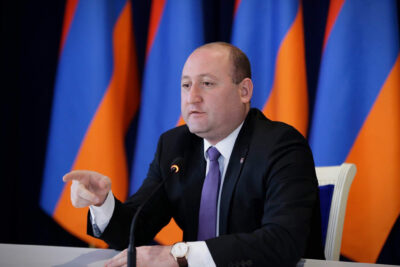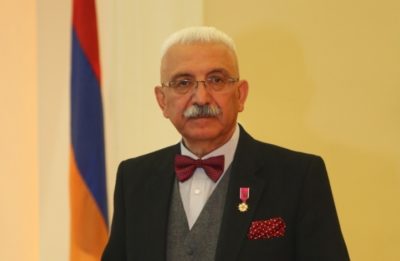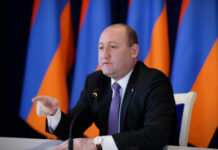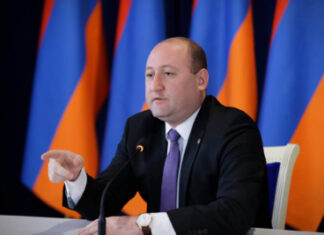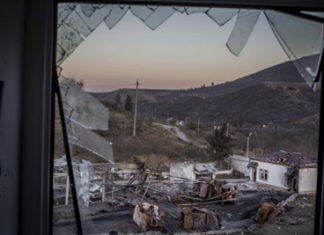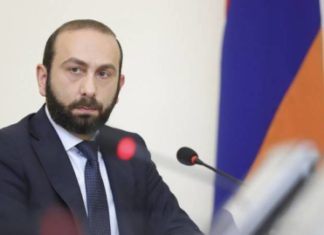By Prof. Hayk Kotanjian and Prof. Arthur Atanesyan
At the recent press conference of the Minister of Foreign Affairs of the Russian Federation Sergei Lavrov dedicated to European security, Lavrov expressed the opinion that the leaders of Armenia and Azerbaijan “wanted to sign a peace treaty, guided by the UN Charter and Alma-Ata Declaration. And the Alma-Ata Declaration of the creation of the CIS [Commonwealth of Independent States] clearly says that the boundaries between new states will be based on the administrative borders between the republics of the former Soviet Union. At that time, the Nagorno-Karabakh Autonomous Region definitely was a part of the Azerbaijani Soviet Socialist Republic” (https://newsarmenia.am/news/in_the_world/-eto-ne-iz-opery-peregovorov-lavrov-o-povedenii-armenii-v-peregovornom-protsesse-/).
Here we need to address the request of Armenian, Russian and American colleagues to respond to these comments, as well as similar considerations of US Congressional Rep. Frank Pallone (D-N.J.) regarding the international legal status of Nagorno-Karabakh. Such interpretations, as mentioned, intentionally lead away from the legal essence and details of the issue toward current political preferences. We consider it necessary to discuss the issue in terms of political science and international law, providing firm and well-approbated evidence that at the time of the signing of the Alma-Ata Declaration on the creation of CIS, the Nagorno Karabakh Autonomous Oblast (NKAO) was no longer part of the Azerbaijan SSR.
The starting argument of this justification is the right to withdraw a Union Republic from the USSR, enshrined in the 72nd article of the Constitution of the USSR of 1977. The procedure for the exercise of this right was established by the law of April 3, 1990 “On the procedure for resolving issues related to the release of the Union Republic from the USSR.”
According to the 3rd article of this law, autonomous entities and national minorities have the same right to withdraw from the republic and to an independent determination of their fate, if the Soviet republic to which they belong decides to withdraw from the USSR. At the same time, the republic was obliged to hold an independence referendum, also in autonomous units and in the territories of compact residence of national minorities, managing separate counting of votes (the Law of the USSR “On the procedure for resolving issues related to the withdrawal of a Union Republic from the USSR” No. 1410-1 of April 3, 1990, G.,” Vedomosti of the Congress of People’s Deputies of the USSR, Supreme Soviet of the USSR,” 1990, No. 15, in Russ.).
After the failure of the putsch in the USSR on August 19-21, 1991, the Supreme Council of Azerbaijan adopted the Declaration of Independence (Declaration of the Supreme Council of the Azerbaijan Republic “On the restoration of state independence of the Azerbaijan Republic, August 30, 1991). It was the Azerbaijani declaration to withdraw from the USSR that gave the right to the Nagorno-Karabakh Autonomous Region and the Shahumyan District with its predominantly Armenian population to independently dispose of its fate following the aforementioned Law of April 3, 1990. Following the Law, the regional council of the Nagorno-Karabakh and the district council of Shahumyan decided to proclaim the independence of the Nagorno-Karabakh Republic at a joint meeting on September 2, 1991, within the boundaries of the Nagorno-Karabakh Autonomous Region and Shahumyan District of the Azerbaijan SSR. Independence of the Nagorno-Karabakh Republic was proclaimed on the territory where the Constitution and legislation of the USSR as well as other Soviet laws were still in action and did not contradict the goals and principles of the declaration of independence and the characteristics of the Nagorno-Karabakh Republic (declaration “On the proclamation of the Nagorno-Karabakh Republic,” September 2, 1991).
